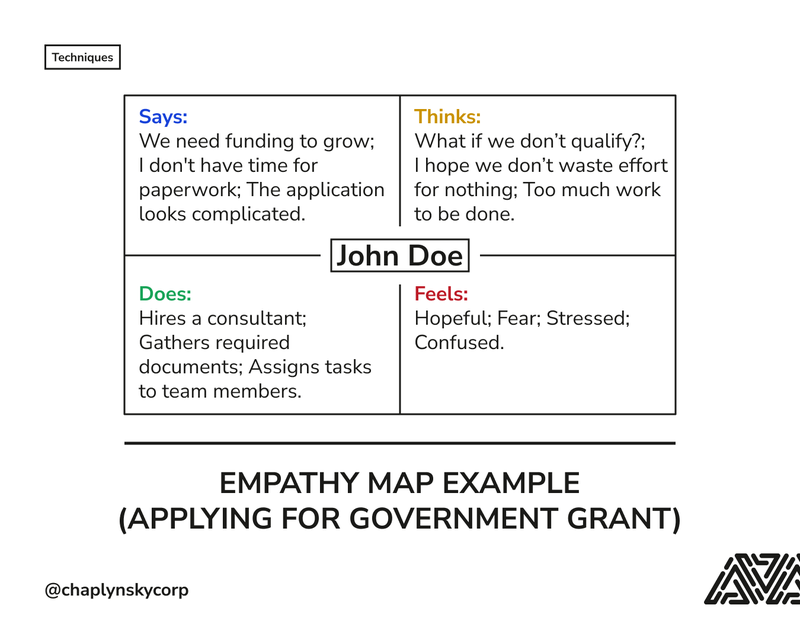Understanding stakeholders is not optional – it drives better decisions and stronger outcomes. An Empathy Map visualizes exactly what a specific stakeholder says, thinks, does, and feels, giving the team a shared, evidence-based view of their real needs and motivations.
Empathy maps are traditionally divided into 4 quadrants with the stakeholder in the middle. Each quadrant contains:
- Says – direct quotes and requests
- Thinks – unspoken concerns or beliefs
- Does – observable actions and behaviours
- Feels – emotions that drive their decisions
Example
The image below represents an example of the Empathy Map. In this example, John, the client, wants to apply for a government grant for his company.

Understanding stakeholders and building empathy with them helps us remove biases, discover weaknesses, needs, and goals.
Downloads
Supplemental Resources
Empathy Map.pdf
Capturing stakeholder insights is not optional – it drives better decisions and stronger outcomes.

